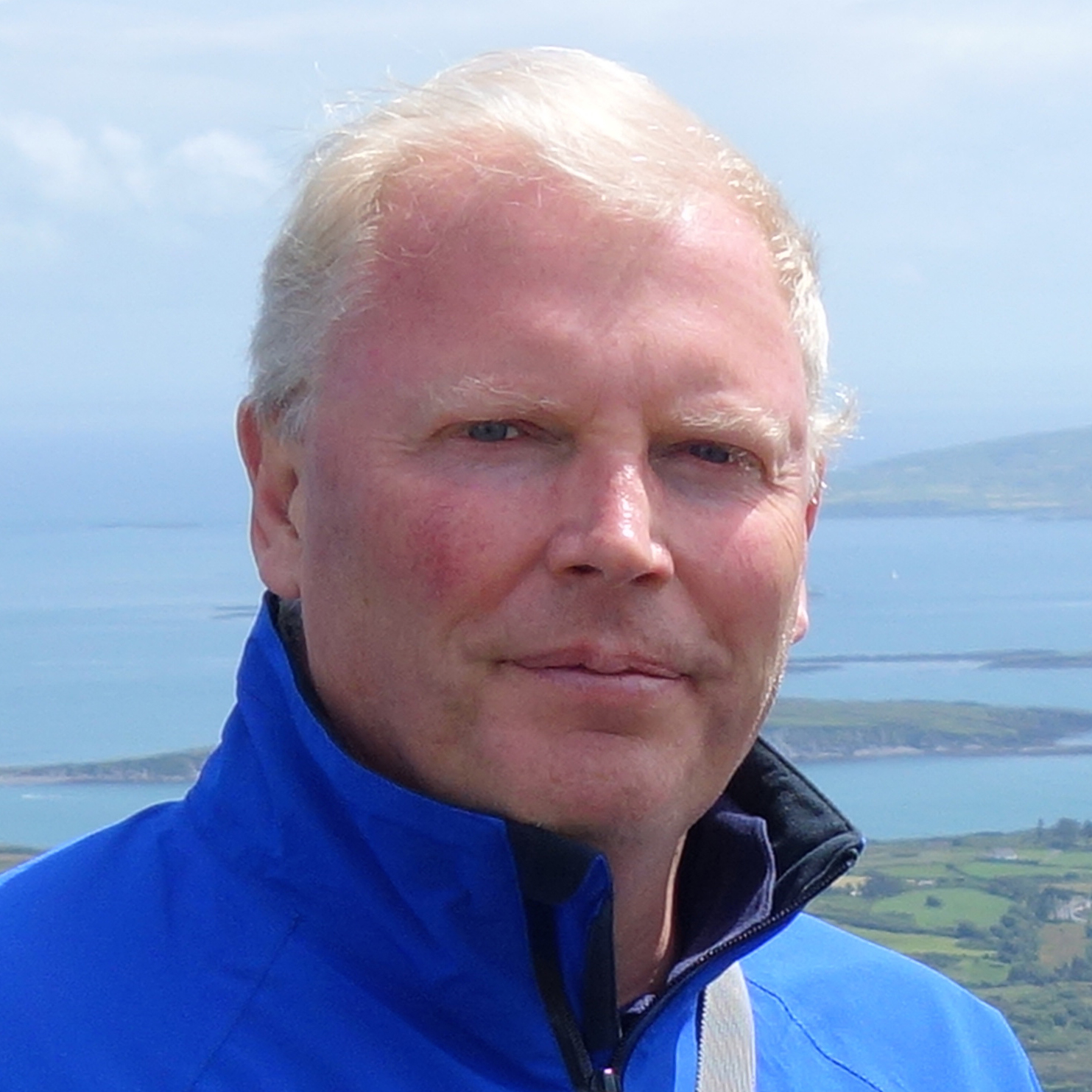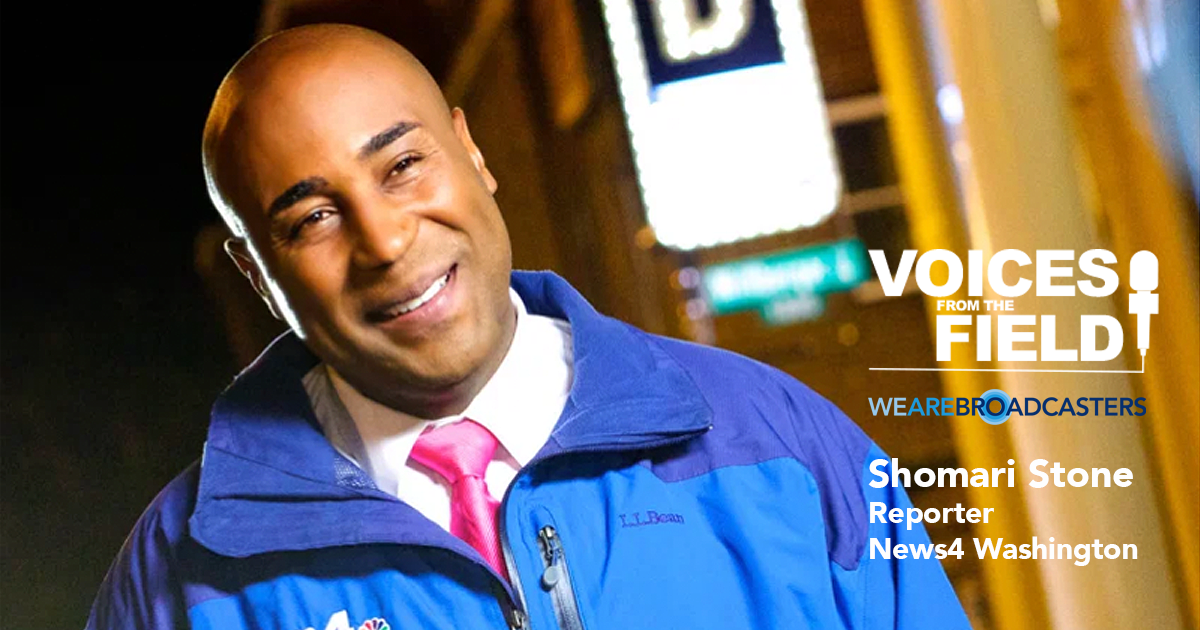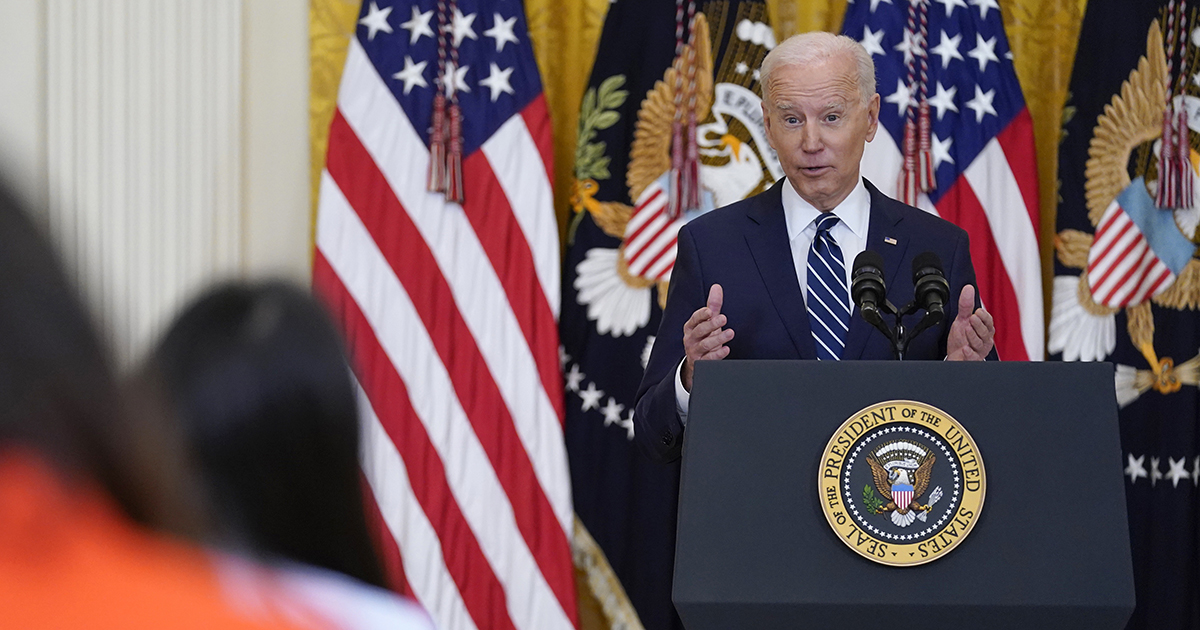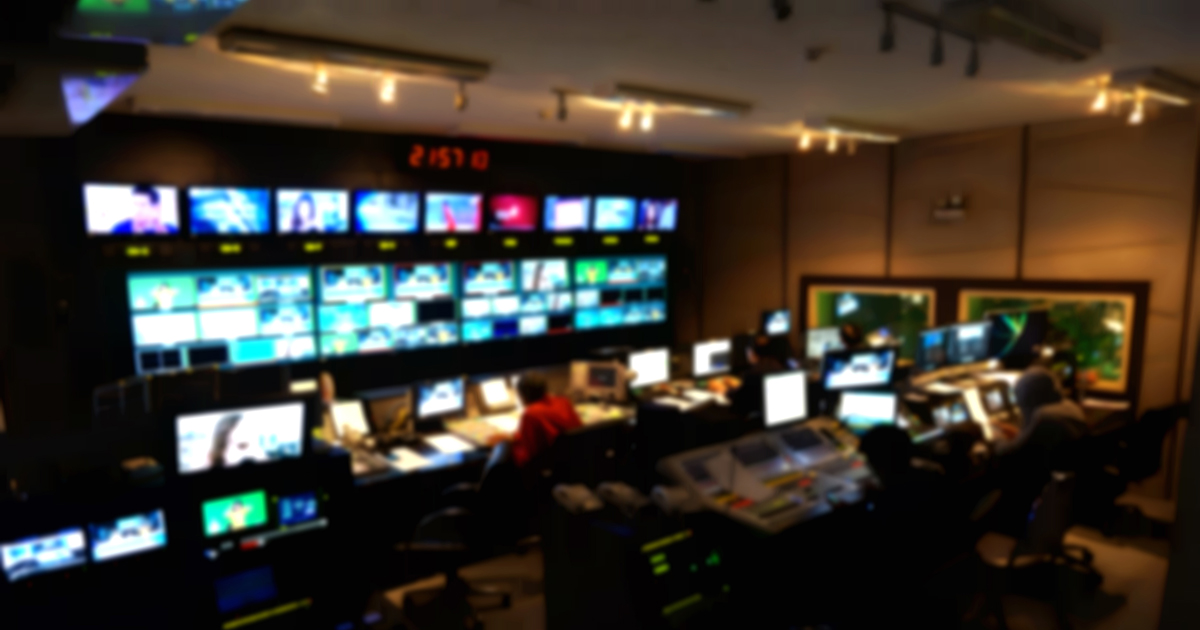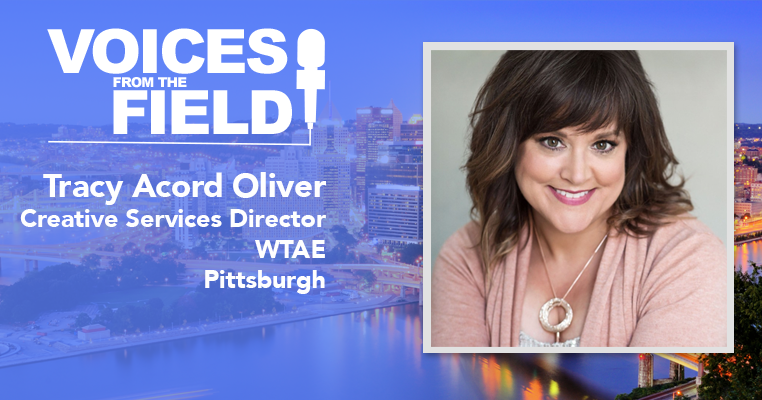
America’s local radio and television stations and broadcast networks are on the front lines covering monumental stories that impact local communities and the nation. Broadcasters are a pillar of democracy, a free and open press whose resolve to bring truth to light cannot be broken.
The National Association of Broadcasters’ “Voices From the Field” series captures why professionals are passionate about being broadcasters. The series, part of NAB’s “We Are Broadcasters” initiative, is intended to spotlight how broadcasters are using their expertise, experience and dedication to local broadcasting to serve audiences and uplift communities.
Tracy Acord Oliver is Creative Services Director at WTAE Pittsburgh. Her experience in television broadcasting includes storytelling, hands-on video editing and providing strategic guidance to her team.
Oliver has previously worked in master control, promotion departments and as a writer/producer at KTWO TV, Casper, Wyoming; WCYB, Bristol, Tennessee; WSOC-TV in Charlotte, North Carolina; and WJW-TV Fox 8 in Cleveland, Ohio. Oliver graduated with a bachelor of arts (BA) degree with a focus on broadcast journalism from Duquesne University.
In her “Voices From the Field” conversation with Gagan Nirula, VP Digital, NAB, Oliver outlined where her love of broadcasting came from; a day in the life of a Creative Services Director during the pandemic lockdown; the common threads that bind community-based broadcasters together right across the nation; and her optimism for the continuing importance of local broadcasters in the next five to ten years.
Introducing the session, Nirula thanked Oliver and said that with “Voices in the Field,” NAB’s goal is to really spotlight some of the folks who are critical to broadcasting but work behind the scenes — and Oliver’s job and role really fits that to a tee.
So let’s dive right in. Tell us about how you became interested in broadcasting.
I was blessed at a very, very young age. And I don’t take this for granted, because I know people struggle sometimes. I’ve had friends who have gone through high school, even up into college and said, “I don’t know what I want to do,” and they’ve changed majors.
I knew early in elementary school. And I don’t know where it came from. I take it as an absolute blessing from above! It was radio at first. I think it came from my mother always listening to talk radio.
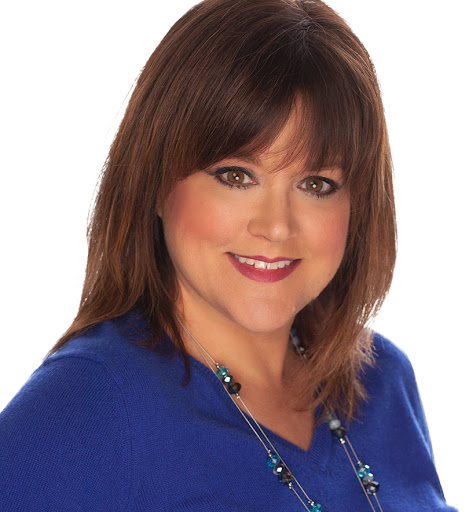
There was something so exciting about this thing that grabbed her attention and kept her attention. It was the essence of communicating that I found fascinating. But I was small at the time, so I didn’t get all that in my brain. But something that kept my mother’s attention was fascinating to me.
I think it was fourth grade, when I decided I wanted to be in radio broadcasting. And then it changed. I think that change came from watching sports. NFL Films. I loved watching the behind the scenes, and the stories in the Olympics of the people and the athletes and what they went through. I loved it, and that’s what I wanted to do.
I knew and I was very focused on it, through high school, college, and my senior year of college. My last semester, I got a production internship on a local talk show here in town. And I absolutely fell in love. And I went, “Wait a second. You mean, I get to be behind the scenes. And I get to have an idea. And I get to watch and put it together and see the end product?” And I thought, “Okay, I this is what I want to do.”
Beyond the anchor and reporter roles, there are many other ways to tell stories in broadcasting that are equally important, right?
Yes! They are equally important. Nowadays we try very hard to pull back that curtain at times and you are aware that there are people working in the background. Before, you only saw Walter Cronkite — you never saw the people behind the screen. But now, I think we have broken that barrier and, heck, during the pandemic we’re now seeing these anchors in their houses and their kids running around behind them! So they’re very much real people now — so you know there are a lot more people there.
Right, the pandemic has definitely opened a lot of eyes as far as what reporters and editors go through to actually get that final story on the air, whether it’s radio or television. Tell us what a day in the life of your work as the Creative Services Director at WTAE looks like.
A day in the life right now? During the pandemic it’s hard because I have an almost nine-year-old son, so I am a part time third grade teacher along with being a Creative Service Director. We have been out of the building for over a year now.
“There was something so exciting about this thing that grabbed my mother’s attention and kept her attention. It was the essence of communicating that I found fascinating.”
— Tracy Acord Oliver
So that’s hard, because at WTAE we are very much lockstep with the news, the news director and the news department. I think to be a really great promotions department, creative service department, you have to be arm-in-arm with the news department. And we are. If I’m in there, it’s three, four or five times a day we are talking and we’re down there in the newsroom.
A lot of people are saying there’ll be people that can work from home now. But I don’t think creative services will, because I wouldn’t want to.
I see the buzz of a newsroom start, and it’s a different buzz when breaking news is happening. I know I gotta get down there. I know something’s going on. When I see more than two people standing at the assignment desk, something’s going on. I don’t get that from home.
There’s a delay right now. And that delay drives me insane! There is an electricity that’s missing, that we thrive off of in the news business. I mean, let’s face it, we’re all adrenaline junkies. We like that feeling of whatever’s happening, we’re going to get it done. We like very much the collaboration in the news business and in the television business. That’s hard when I’m working from my laundry room!
You talk about the electricity when there is breaking news. In the last year with the pandemic, there’s been so much breaking news — for good or bad — and the newsroom is typically an open space where everyone can see each other, as you say. While working remotely, how did your station do it? How did you balance that challenge of not being able to be in the same space with your team and still cover stories, especially stories like the election and news that was breaking all the time? 2020 was unprecedented in terms of breaking news.
Microsoft Teams and Zooms helped. We wouldn’t have been able to do it otherwise. We were able to log in remotely. We were be able to talk to each other and see each other and have that connection with people, see what people were going through or seeing what they needed.
During the election, we were “election central PA.” My phone was stuck to my ear at that point. So, you know, I think there was constant checking and constant asking, “How’s everybody doing? What do you need help with?” And the same with news, I was in constant contact with my team. It really is about communication.
In breaking news, we’re camped out in the newsroom. Now, we were camped out over Teams. We were lucky enough that we were able to set up where I could see feeds coming in, especially with the riots or protests. So I was able to look in on our editors and our team was able to look at feeds coming in. That was very helpful.
“There’s a delay right now. And that delay drives me insane! There’s an electricity that is missing, that we thrive off of in the news business.”
— Tracy Acord Oliver
And I reminded my team that, “Hey, guys, as frustrating as it is, can you believe what we’ve done? We have done the impossible.”
I mean everyone in TV — not just us. We are literally sitting in our houses and putting television on the air. If I would have told you last February [2020] that everything we’re doing in the newsroom, we’re going to do from home for a year, you would have said, “Forget it. There’s no way. Are you crazy?” We’ve done the impossible. So nothing is impossible now.
You’ve worked in markets all across the country. What are the common threads that, as broadcasters, bind all those communities together in similar ways?
The universal story we’re telling is the community story. We’re telling stories that are important to the community, because we are the people that are living and working in their community. A cable news network can’t replicate that. Local broadcasters are boots on the ground.
They’re the ones going to the same schools and the same fairs through the good times and the bad — the big fair or festival that everybody loves to go to and enjoy. The traditions that happen in that community that make that community unique.
Those anchors understand that. They understand the shorthand of that community. Each community has that. If I’m covering Casper, Wyoming, I understand what rodeos are about. I get it. I understand that tradition.
What makes people so proud of going to a Steelers game? I get it. I get why that’s important to people in Pittsburgh. So that’s the common thread that I’ve seen everywhere. That love of community and why it’s so important. Why getting it right is important — from the breaking news stories to the corruption stories to the good news stories.
This is the place I live. And this is the place I love. And I want you to tell me what’s going on here. And anchors want to get it right, because I live here. I care about what’s going on here. My kids are going to the same school your kids are going to. And that’s the commonality.
How have you seen the role of women in the creative services space change in the time since you became a broadcaster to today?
When I started, there were women in my position, but not many. Creative services seemed to me to be the first crack, where women could grow in that position. Now, as my career has grown, general managers can now be females. I’m happy to say we’ve gone from CSDs to GMs, to now, vice presidents and board members. And that’s great. That’s where it needs to be.
I’m happy and and very grateful and blessed that I am in this company, a champion of women and champion of diversity — and taking a very strong stance in it making this equitable for all, as it should be and realizing that it should have been that way all along.
“The universal story we’re telling is the community story. We’re telling stories that are important to the community, because we are the people that are living and working in the community. A cable news network can’t replicate that. Local broadcasters are boots on the ground.”
— Tracy Acord Oliver
Starting out, there were a lot of men everywhere. My whole career has been with men — I’ve been the one female in the group, which I’m very comfortable with. But it has not been a female oriented profession in that sense.
And I think that has to do with the technology side. We didn’t have a lot of women going to the technology side. I will never call myself an editor. I can edit. But to me, the label of an editor is a completely other level than what I do. So I think that was a lot of it at the beginning when I started. It was a technical side of the field.
Now, of course, people edit on their phones. It’s very comfortable for females. So I’m glad to see this is not a barrier anymore.
Where do you see broadcasting in the next five to 10 years?
In a word: thriving. I see local broadcasting thriving, and that comes from living through the pandemic. I think the pandemic proves the importance of local broadcasting.
The research shows where people go when they want to know what is happening in their community. They need that information. Now more than ever, the first place they went, it showed and it was more than just digital. It was that they wanted that human connection with people they knew and people they trusted. Again, that can’t be replicated.
It can’t be replicated with something that is not the human I know or trust, a person not in my community. So I see local broadcasting thriving. Nobody can do what local broadcasting does.

